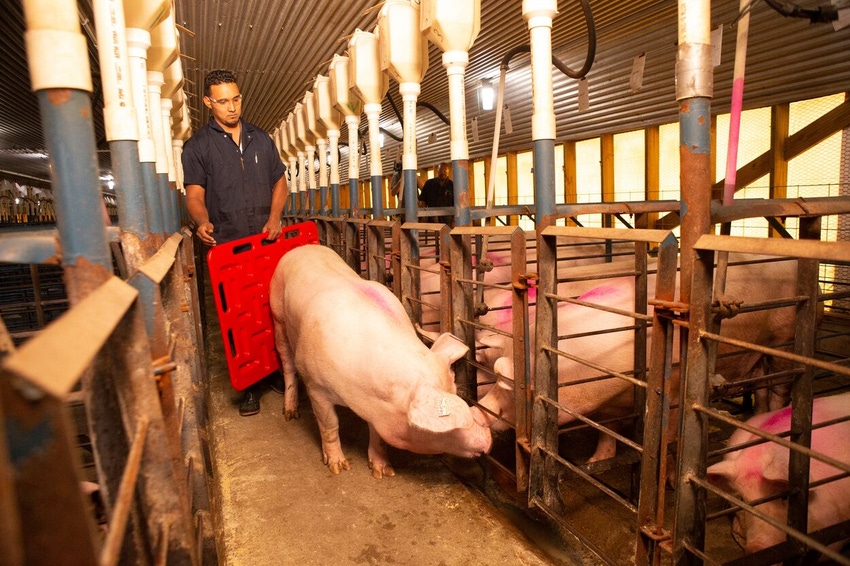Rather than asking how the sow walks to the farrowing stall, question is whether the sow has no inhibition to get up to eat, drink and nourish her litter.
March 14, 2023

When you think about a sow with lameness, what image leaps to your mind? The classic view is of a sow that is limping as it walks. I would argue that a more accurate portrayal of the lame sow is one that is not walking and is reluctant to get up and walk. Examining the gait of a sow can still predict real problems, but sows are also capable of hiding their lameness or showing different levels of lameness over time.
It really does beg the question of what defines lameness. Enveloped in an examination of gait is the idea that the sow is in pain when it walks and thus normal, or any type of movement, is inhibited. Pain needs to be considered a useful condition to protect animals. It has been shown to affect not only behaviors such as walking and standing, but it is closely aligned with other biological functions. Pain thus is redirecting the biological activity of an animal to support primary biological aims, particularly survival of the sow and progeny.
The four basic biologic functions of an animal is to feed, fight, flee and reproduce. In lame sows, we see that the lameness predicts lower levels of feed intake in the farrowing crate, lower levels of ability to compete for resources and more difficulty to avoid agonistic behaviors. More than anything else, lameness predicts that reproduction is reduced, both directly, through reduced likelihoods of being rebred and maintaining pregnancy and indirectly, through being able to maintain a presence in the herd.
The surprising part of analyses of effects of lameness is that we detect its effects as often as we do. We use snapshots in time, having a subjective scoring at the time of movement from gestation to farrowing used to predict effects during a subsequent farrowing cycle of more than four months. We have measured not only that scoring varies from observer to observer, but also the sow's gait varies and they often hide their difficulty to walk, a trait common in many species to protect themselves from predators.
The epidemiologic question at hand is whether a relationship between cause and effect strengthens when lameness is measured more accurately. The trend we see is that this does occur, with lameness climbing in importance as a factor in sow longevity as we focus on this problem. We find that many of the reported culls for reproductive reasons are preceded by lameness. There are other pathologies in play that can cause a realignment of a sow's biologic priorities, but lameness needs to be further monitored.
Finally, we need to reconsider our definitions of lameness. As we enter the age of using instrumental evaluation rather than our eyeballs, we should not limit ourselves to trying to replicate our evaluations. Rather than mimicking our snapshots of gait analysis, we have the opportunity to constantly monitor activity. Rather than asking how the sow walks to the farrowing stall, the question is really whether the sow in the farrowing stall has no inhibition to get up and down easily to eat, drink and nourish her litter. This results in better and more consistent survivability of both the sow and the litter.
You May Also Like



